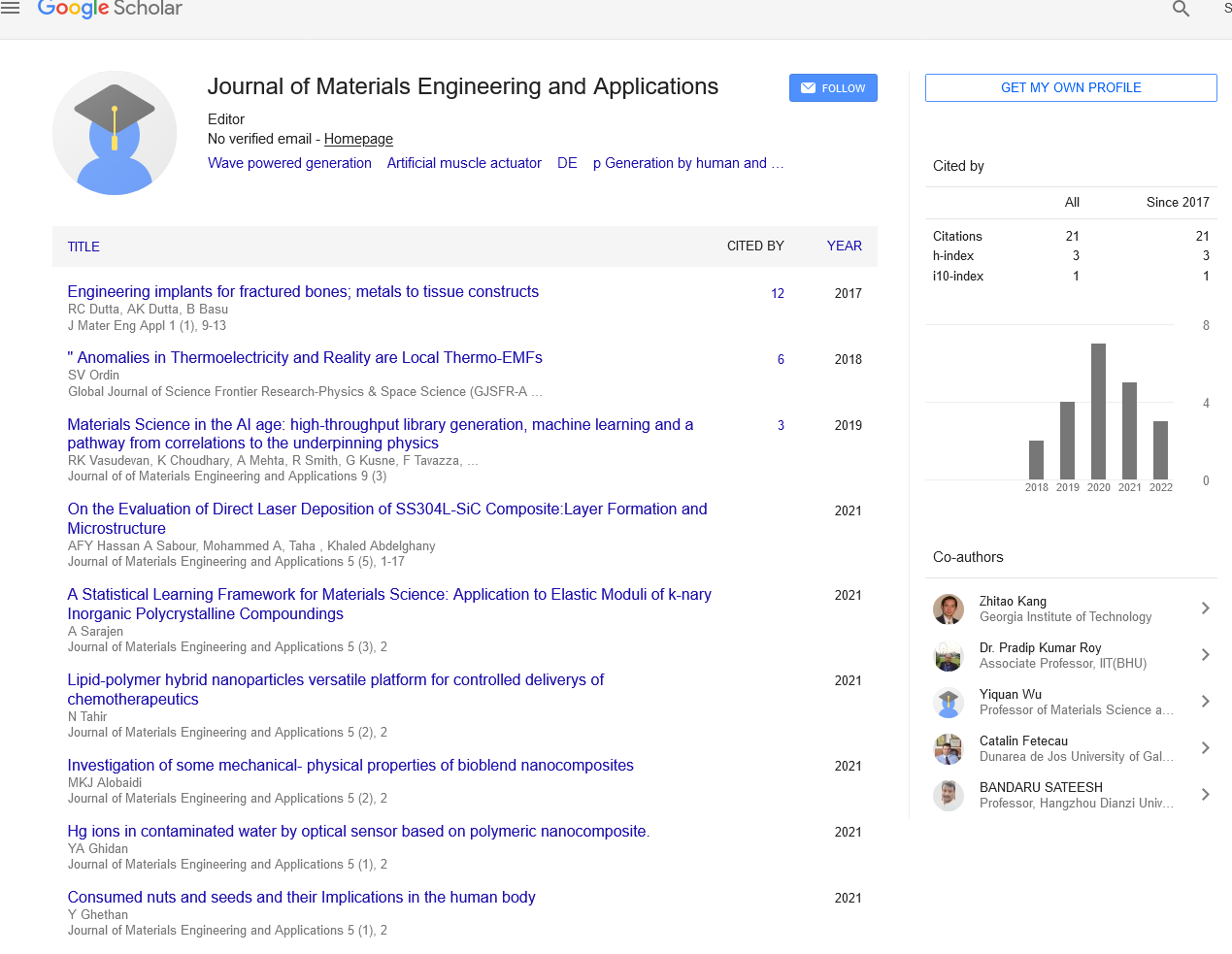
Sign up for email alert when new content gets added: Sign up
Abstract
Liquid phase exfoliated graphene thin film via spray pyrolysis: Electrical conductivity and Photo-conducting response
Author(s): V. VasanthiMore than a decade, graphene, an allotrope of carbon, is a fascinating material used in a wide range of applications like gas sensor, supercapacitors, Li ion battery, solar cells, flexible electronic devices, photocatalysis, etc., because of its outstanding and attractive properties. Different physical methods were used for the production of large scale high quality graphene namely mechanical exfoliation, chemical vapor deposition (CVD), epitaxial growth on silicon carbide, arc discharge method and substrate free gas phase synthesis [1]. The difficulties in creation of high temperature control over cooling rate, pressure and requirement of high quality substrate materials are standup barriers to these methods for the production of graphene in large scale. Later days, large scale synthesis of graphene sheets were achieved by chemical method called Hummer’s method involving various tedious oxidation and reduction process to produce reduced graphene oxide (rGO) sheets as a final product. Another simple and low cost solution process, in progress, for the production of high quality single layer to few layer graphene sheets with significant yield and electrical conductivity is ultrasonication of pristine graphite powder in suitable organic solvents [2]. Synthesized graphene sheets can be effectively used in various devices only after converting it in the form of thin films. Some of the researchers have tried to fabricate the thin film of liquid phase exfoliated graphene by vacuum filtration method using different membranes which are having the disadvantage of high cost and less possibility of transferring the film to other substrate for application purposes. Machuno et.al and Rouxinol et.al have reported the thin film of graphene exfoliated by liquid phase exfoliation by dip coating and dielectrophoresis, respectively [3,4]. In the present work, we have studied the structural, morphological and electrical properties of graphene thin film by facile and eco-friendly spray pyrolysis route using liquid phase exfoliated graphene dispersion. Few layer graphene dispersion was prepared by liquid phase exfoliation of graphite powder in DMF with 8 h ultrasonication. After sonication the dispersion was centrifuged with 3000 rpm and supernatant dispersion was sprayed on glass substrate by spray pyrolysis method to prepare the graphene thin film. Then, the structural, optical and electrical properties of the deposited few layer graphene film (FLGF) are investigated. The sheets of graphene are deposited uniformly on the substrate and some of them on the surface are rolled in a cylindrical shape. Graphene thin film showed significant optical transparency of 57 % in the region of 400-550 nm and electrical conductivity in the order of 744 S/m with surface resistivity of 3.54 k Ω/sq. Prepared liquid phase exfoliated graphene thin film showed superior photoelectric response. The results of this study provide a framework for fabricating an optimized graphene thin film via spray pyrolysis route for optoelectronics devices




